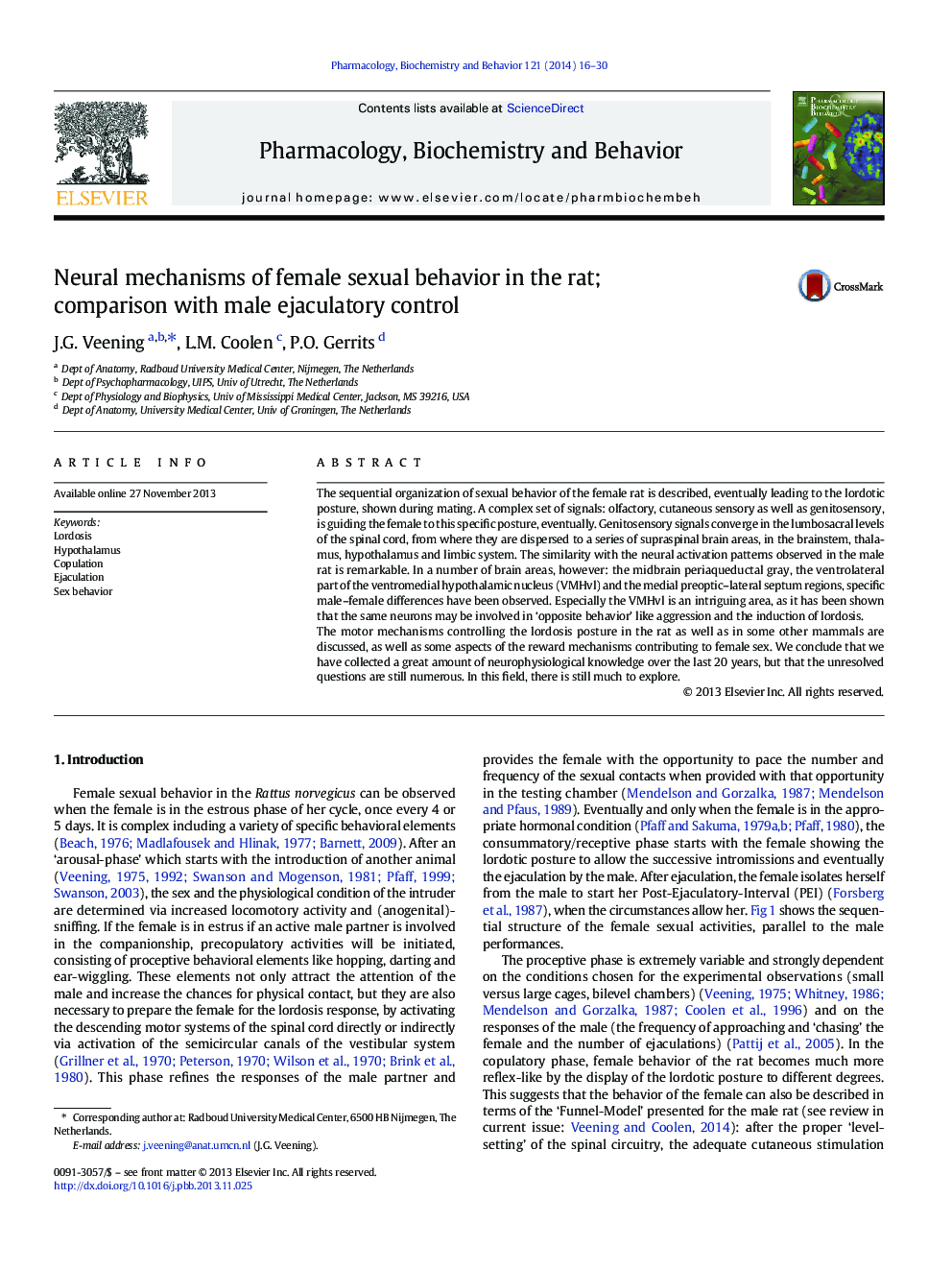| Article ID | Journal | Published Year | Pages | File Type |
|---|---|---|---|---|
| 2012837 | Pharmacology Biochemistry and Behavior | 2014 | 15 Pages |
The sequential organization of sexual behavior of the female rat is described, eventually leading to the lordotic posture, shown during mating. A complex set of signals: olfactory, cutaneous sensory as well as genitosensory, is guiding the female to this specific posture, eventually. Genitosensory signals converge in the lumbosacral levels of the spinal cord, from where they are dispersed to a series of supraspinal brain areas, in the brainstem, thalamus, hypothalamus and limbic system. The similarity with the neural activation patterns observed in the male rat is remarkable. In a number of brain areas, however: the midbrain periaqueductal gray, the ventrolateral part of the ventromedial hypothalamic nucleus (VMHvl) and the medial preoptic–lateral septum regions, specific male–female differences have been observed. Especially the VMHvl is an intriguing area, as it has been shown that the same neurons may be involved in ‘opposite behavior’ like aggression and the induction of lordosis.The motor mechanisms controlling the lordosis posture in the rat as well as in some other mammals are discussed, as well as some aspects of the reward mechanisms contributing to female sex. We conclude that we have collected a great amount of neurophysiological knowledge over the last 20 years, but that the unresolved questions are still numerous. In this field, there is still much to explore.
